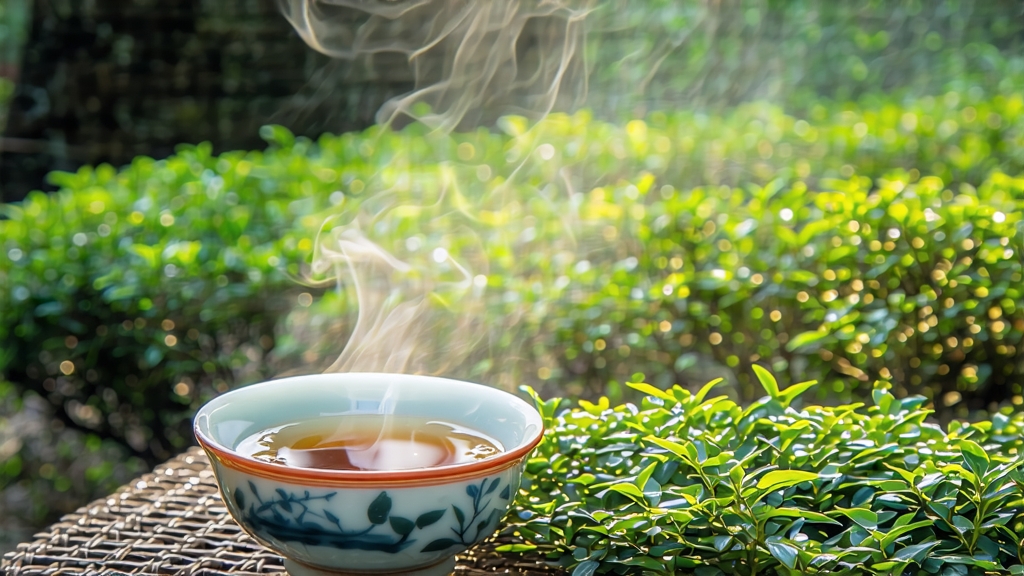
Rising like an emerald island above the Tropic of Cancer, Taiwan’s Alishan range has been crafting one of the world’s most fragrant oolongs since the late nineteenth century. Alishan High-Mountain Oolong—often simply called “Alishan Qingxin” abroad—belongs to the larger family of Taiwanese high-mountain teas (gaoshan cha), yet it possesses a personality so distinct that seasoned cuppers can identify it blindfolded by nothing more than its alpine orchid bouquet and crystalline sweetness.
Historical Roots
Tea first traveled to Taiwan from Fujian in the early 1700s, but Alishan’s story begins in 1895, when Japanese agronomists searching for suitable elevations to cultivate Assamica varieties stumbled upon the mist-laden slopes above 1,000 m. They found the indigenous Qingxin (Green Heart) cultivar fared far better, producing a lightly oxidized oolong whose fragrance echoed the mountain’s perpetual cloud cover. After World War II, Kuomintang veterans refined the craft, introducing tighter rolling techniques and charcoal finishing. By the 1980s, Alishan oolong had become a flagship export, its name synonymous with Taiwan’s tea renaissance.
Terroir and Harvest Calendar
Alishan’s magic lies in diurnal temperature swings that can exceed 15 °C. At 1,200–1,500 m, slow metabolic rates force the bush to stockpile amino acids and floral volatiles. Morning fog filters UV light, thickening leaf cuticles and concentrating catechins. The result is a spring tea that tastes like dewy orchids and a winter harvest that carries wafts of ripe peach. Farmers pluck five leaves and a bud—one node more than lowland practice—because the upper leaves remain tender at altitude. Spring picking begins around Qingming (early April), while the prized winter lot arrives in late October, after the mountain’s “nine fogs a day” have worked their alchemy.
Crafting the Leaf
Alishan oolong is a masterclass in partial oxidation, hovering between 15 % and 25 %. The day’s pick is withered indoors on bamboo trays for eight hours, during which leaf handlers rock the trays every thirty minutes to bruise edges gently. This “shake-green” phase initiates oxidation only at the margins, leaving the center verdant. Once the leaf emits a unmistakable pineapple-and-honey note, it is tumble-heated at 220 °C for ninety seconds to kill-green. Rolling follows a unique three-stage rhythm: first a cloth-wrapped ball-rolling machine compresses leaves into tight hemispheres, then a brief rest allows internal moisture to migrate outward, and finally a second compression sets the signature “dragonfly-head, toad-leg” shape. The tea is then dried at 80 °C, sorted, and often given a low-temperature charcoal bake for six hours, lending a whisper of toasted almond without masking the alpine florals.
Grades and Styles
Within Alishan, micro-valleys create subtle variations. Shizhuo, at 1,400 m, yields a creamier body; Zhonghe produces a sharper, lilac perfume; and the north-facing plots of Taiping exude alpine herbs. Commercially, teas are graded by elevation, pluck standard, and roast level. “Ali-Shan Ching Hsiang” denotes the lightest, greenest style, while “Deep Baked Alishan” carries a chestnut hue and a longer shelf life. A rare “Mist Pearl” lot, rolled into tiny beads, is vacuum-packed within hours of finishing to lock in aroma for overseas travel.
Brewing Ritual: From Gongfu to Grandpa
For gongfu service, use 6 g of leaf in a 120 ml gaiwan. Rinse with 95 °C water for three seconds to awaken the roll, discard, then infuse for 45 seconds. Subsequent steeps add five seconds. The first liquor glows pale jade; by the third, it deepens to golden amber, releasing a kaleidoscope of orchid, honeydew, and fresh cream. If you prefer Western style, 3 g per 250 ml at 90 °C for three minutes yields a silky cup, though aromatics are less layered. Grandpa-style—leaves in a tall glass topped with 85 °C water—works surprisingly well; the nuggets sink slowly, unfurling like underwater blossoms while you sip through the day.
Tasting Lexicon
Begin by “